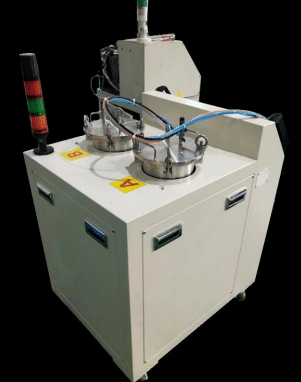Dispensing systems are the unsung heroes of countless industries, silently ensuring that liquids, powders, and gases are accurately and efficiently distributed. From manufacturing to healthcare, from food and beverage to automotive, these systems play a crucial role in maintaining precision, consistency, and quality. In this blog, we’ll explore what a dispensing system is, how it works, and its importance in various applications.

What is Dispensing System?
The dispensing system, in its simplest form, is a mechanical or automated setup designed to deliver specific quantities of liquids, powders, or gases with precision and control. These systems are engineered to meet the needs of various industries, allowing for a wide range of applications, from filling bottles in a beverage plant to depositing precise amounts of adhesive on an automotive assembly line.
Components of a Dispensing System
Dispensing systems are composed of several key components, each serving a unique role in ensuring accurate and reliable dispensing:
- Reservoir or Supply: This is where the material to be dispensed is stored. It could be a tank, a cartridge, a syringe, or any other suitable container, depending on the application.
- Dispensing Mechanism: The dispensing mechanism varies based on the material to be dispensed. For liquids, it might be a pump or a valve. For powders, it could be a vibratory feeder. Gases are typically controlled using a manifold or pressure regulator.
- Control System: Modern dispensing systems are often equipped with sophisticated control units, which can be manually operated or fully automated. These control systems determine the amount and rate of material to be dispensed.
- Dispensing Tip/Nozzle: The nozzle or tip at the end of the dispensing mechanism is responsible for precisely delivering the material to its intended destination. It’s designed to minimize waste and ensure accurate placement.
How Dispensing Systems Work
The operation of a dispensing system depends on the specific application and the type of material being dispensed. Here’s a simplified overview of how a typical liquid dispensing system works:
- Material Preparation: The material to be dispensed is prepared and loaded into the reservoir, which can be a tank or a syringe.
- Material Transport: The control system activates the dispensing mechanism (pump or valve), which pressurizes or propels the material toward the dispensing tip.
- Precise Dispensing: The material is dispensed through the nozzle or tip in a controlled manner. The control system ensures the accurate amount is delivered, often measured in volume, weight, or time.
- Monitoring and Feedback: Many modern dispensing systems incorporate sensors and feedback mechanisms to verify that the dispensed amount matches the desired quantity.
Importance in Various Industries
Dispensing systems are crucial in a wide range of industries, including:
- Manufacturing: In manufacturing, dispensing systems are used for applying adhesives, coatings, and sealants, as well as filling containers with precise amounts of liquids or powders.
- Pharmaceuticals: Dispensing systems are essential for filling vials, capsules, and syringes with medications, ensuring accurate dosages.
- Food and Beverage: These systems are used for filling bottles and containers with beverages, sauces, and other food products, maintaining consistency and quality.
- Automotive: Dispensing systems apply adhesives, sealants, and coatings during the assembly of automotive components, contributing to the strength and longevity of vehicles.
- Electronics: In electronics manufacturing, precise dispensing of solder paste and adhesives is critical for circuit board assembly.
- Medical and Healthcare: Dispensing systems are used in diagnostic equipment, research laboratories, and healthcare settings for dispensing reagents, chemicals, and fluids.
Conclusion
Dispensing systems are the backbone of many industries, ensuring accuracy, efficiency, and quality in the delivery of materials. They come in various forms and sizes, tailored to the unique requirements of different applications.
